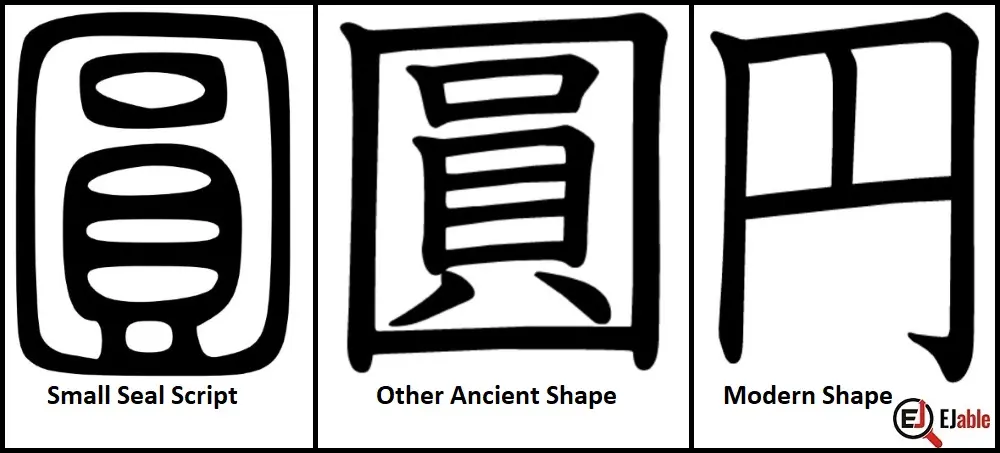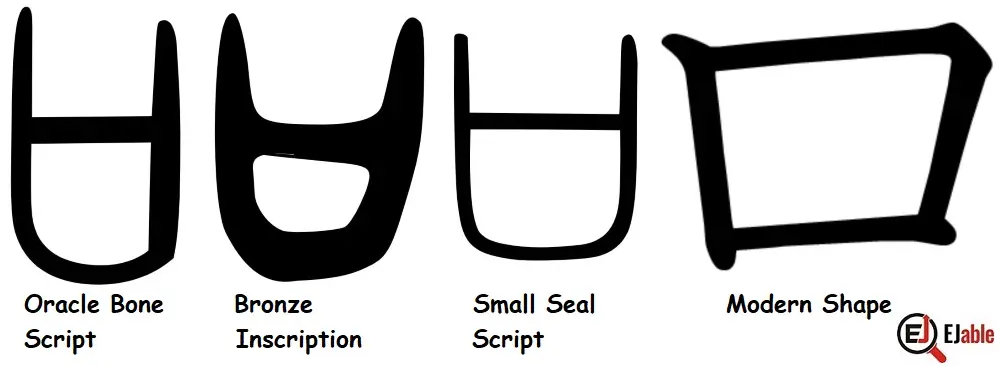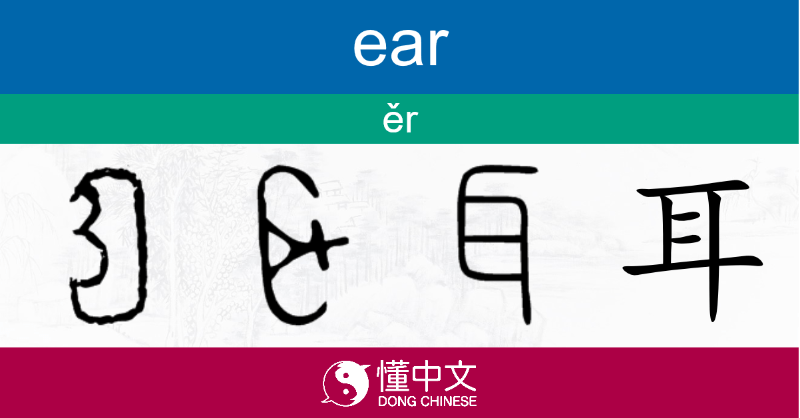みなさん、こんばんは!🌙
Minasan, konbanwa!
今日は、かんたんな漢字を10こ いっしょにべんきょうしましょう。
Today, we will keep learning the next 10 simple kanji characters together.
Let’s go! 💪
1. 円 (えん — en) — Yen (Japanese currency)
- History: Originally a circle shape (symbolizing a coin).
- Stroke: Simplified circle within a square → 円
- Memory Trick: Think of a round yen coin.
- Example:
- 百円 (ひゃくえん — hyaku en) — one hundred yen
- Vietnamese: một trăm yên

2. 口 (くち — kuchi) — Mouth
- History: Drawn as a square opening representing a mouth.
- Stroke: Square shape → 口
- Memory Trick: Looks like an open mouth.
- Example:
- 口を開ける (くちをあける — kuchi o akeru) — to open one’s mouth
- Vietnamese: mở miệng

3. 目 (め — me) — Eye
- History: Represents an eye with a pupil and eyelids.
- Stroke: Vertical rectangle with a middle line → 目
- Memory Trick: It looks like an eye seen from the side.
- Example:
- 目が大きい (めがおおきい — me ga ookii) — big eyes
- Vietnamese: mắt to
4. 耳 (みみ — mimi) — Ear
- History: Stylized drawing of the outer ear.
- Stroke: Curved vertical structure with lines → 耳
- Memory Trick: Multiple “lines” like folds of the ear.
- Example:
- 耳で聞く (みみできく — mimi de kiku) — listen with your ears
- Vietnamese: nghe bằng tai

5. 手 (て — te) — Hand
- History: Simplified form of a hand.
- Stroke: Complex symbol showing fingers → 手
- Memory Trick: Think of an open hand reaching out.
- Example:
- 手を洗う (てをあらう — te o arau) — to wash hands
- Vietnamese: rửa tay

6. 足 (あし — ashi) — Foot / Leg
- History: A foot stepping forward.
- Stroke: Has both a body and moving leg shape → 足
- Memory Trick: The bottom part looks like a walking foot.
- Example:
- 足が速い (あしがはやい — ashi ga hayai) — fast legs (fast runner)
- Vietnamese: chân nhanh
7. 体 (からだ — karada) — Body
- History: A combination of 人 (person) and 本 (root/trunk), symbolizing a full form.
- Stroke: Complex structure with balance → 体
- Memory Trick: A person’s trunk — the whole body.
- Example:
- 体が強い (からだがつよい — karada ga tsuyoi) — strong body
- Vietnamese: cơ thể khỏe mạnh
8. 人 (ひと — hito) — Person
- History: Two legs walking — a simplified human.
- Stroke: Looks like an inverted “Y” → 人
- Memory Trick: Think of a walking person.
- Example:
- 日本人 (にほんじん — nihonjin) — Japanese person
- Vietnamese: người Nhật
9. 子 (こ — ko) — Child
- History: Shape of a child with arms raised.
- Stroke: Top hat and body → 子
- Memory Trick: Looks like a small person.
- Example:
- 子ども (こども — kodomo) — child
- Vietnamese: đứa trẻ
10. 女 (おんな — onna) — Woman
- History: Image of a kneeling woman.
- Stroke: Curvy shape with folded legs → 女
- Memory Trick: Think of a graceful feminine figure.
- Example:
- 女の人 (おんなのひと — onna no hito) — woman
- Vietnamese: phụ nữ